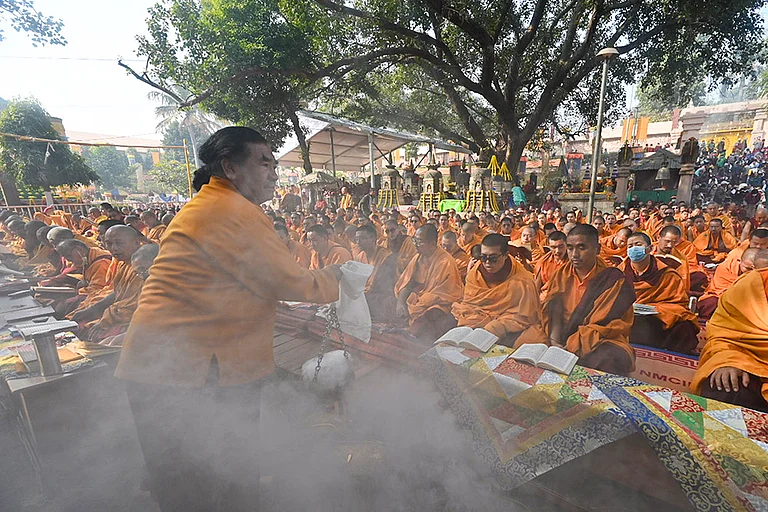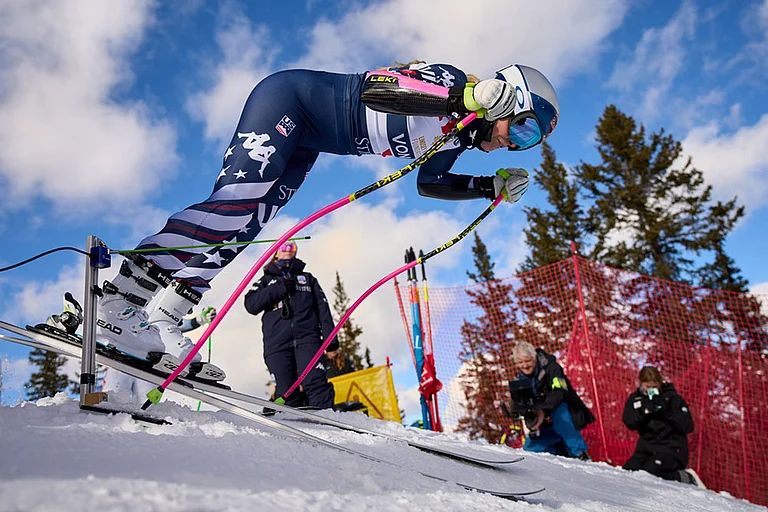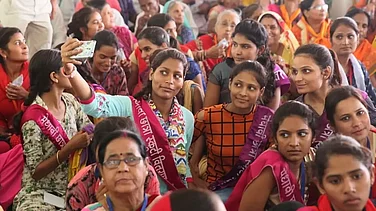Recently, Rahul Gandhi of the Indian National Congress concluded his Padyatra in Srinagar after several months on the road. The entire Padyatra was branded as 'Bharat Jodo Yatra', which grabbed the attention of national and international news media.
Against this backdrop, there is another Padyatra underway in Bihar that is going largely overlooked and unnoticed. The Padyatra is organised by the Musahar community, one of the most marginalised communities in India. They are marching towards Delhi to recognise the contributions of their revered icon - Dashrath Manjhi. Through the Padyatra, they are demanding the highest civilian award in India, Bharat Ratna, for Manjhi.
In 1959, Manjhi’s wife died from a fall off a mountain. The labourer from Gehlaur then single-handedly carved out the mountain for over twenty-two years, thus shortening the distance between two villages in the Gaya district from 55 to just twelve kilometres. For this, Manjhi is popularly known as “Parvat Purush” (Mountain Man). He broke the mountain alone with his trusty hammer and chisel (locally known as Hathaudi and Chhenni). Subsequently, a Hindi movie, Manjhi – The Mountain Man was released in 2015 that narrates his heroic interventions for the common good.
India has a rich tradition of Padyatras where freedom fighters and political leaders utilised them as a tool to spread awareness about pressing problems. The goal was to challenge the ruling apparatus peacefully. The way in which the Musahar community is organising the Padyatra is impressive. They derived their notion of the Padyatra from Dashrath Manjhi’s own foot march in the early 1980s. Dashrath Manjhi started his march on the 5th of February. After several days, he reached Delhi from his home in Gehlaur to meet the then Prime Minister, Indira Gandhi, narrated Bipin Manjhi, who is managing the present-day Padyatra.
Interestingly, Dashrath Manjhi used the railway track as his way to reach Delhi on foot but Bipin Manjhi and his fellow community members are using the national highways. They have a larger agenda to spread awareness to people regarding the contributions of Dashrath Manjhi. On being asked about how they are operating, Bipin said: “Hum log 20-25 kilometre chalte hain; kabhi kabhi 35 kilometre tak chale. Ab tak lagbhag 750 kilometre chal chuke hain aur abhi lagbhag 450 kilometre chalna hain. Dilli pahuchne ke kiye; waha hum Pradhan Mantri se milna chahege (We are completing 20-25 kilometres each day; we even completed 35 kilometres in one day. As of now, we have completed around 750 kilometres; we have around 450 kilometres to reach Delhi and we want to meet the Prime Minister of India)".
The Musahar community comes under the Scheduled Caste category. According to the 2011 Census, they are the third largest Dalit community in Bihar with a total population of around 27 lakhs. The community is not restricted to Bihar and resides in the adjoining areas of Uttar Pradesh, Nepal, Jharkhand, West Bengal and Odisha as well. The community largely hails from rural areas where their literacy rate is dismally low at around 29 per cent. Whilst grappling with homelessness and landlessness, they rely on manual labour for their livelihoods. All human development indicators ranging from literacy rates to assets paint a poor material condition of the entire community. In the absence of sustainable livelihood, the community experiences stigma attached to “rat eating” and extreme caste prejudices. Studies elsewhere depicted Musahars as the most deprived community in terms of livelihood; they are considered the “poorest of poor” in the development discourse.
As Musahars reside in Bihar and eastern Uttar Pradesh, the expedition tried to motivate fellow community members during their stay in their hamlets. Under the leadership of Satendra Gautam, they encouraged community members to educate their children to improve their dismal literacy rate. During the Padyatra, they approach the Pradhan (head of the panchayat) and local temple or mosque authorities to allow them to stay the night where they can cook their own food. They carry food supplies along with them.
As Bipin said, “We are carrying a Dan Peti, (donation box). If anyone is interested, they can contribute in the box”. On being asked about whether financial help was something they could get from any political party or politician, Bipin replied, “Ashwasan hi mila hain ek neta ko chhod kar; wo 25 hazar diye hain (They only promise to contribute to this cause; none of them gave anything except one politician from our community who gave around 25 thousand rupees)." The entire expedition relies on small donations from the public. When they marched in Bihar and Eastern Uttar Pradesh, they got immense support from the community members. They spent time with the community members in the villages. When they were leaving those villages, women, children and elderly people accompanied them to the border areas of the district. As their team reached Hardoyi district in Uttar Pradesh, they started getting support from the Nat community. The Nat caste network is helping them, Hulesh Manjhi, former chairman of the State Mahadalit Ayog said. On being asked about the age groups of the people who are involved in the Padyatra, Bipin said; “A majority of people are in their sixties and seventies. They don’t have any big responsibilities back home. We cannot afford the involvement of the youths in this expedition as we are struggling for livelihood”.
“Ye Gareebon ki Padyatra hain (This is a poor man's foot march),” Bipin concluded. There is no press, no police personnel and no Bollywood actors. However, they are trying to spread the message of contributing to society. They advocate for planting saplings to save the environment in the villages. With the message of a single common good, the Musahars are marching silently and unnoticed towards Delhi. They are hoping that their talisman Dashrath Manjhi will get the highest civilian award from the State for his contributions. People associated with the Padyatra strongly believe that Dashrath Manjhi deserves the highest civilian award. Should it happen, Manjhi’s recognition in the form of the Bharat Ratna will contribute to the improvement of social dignity for the entire community, and pave a way forward for their upliftment in larger civil society just like Manjhi paved the road across the ridges of the hills in Gaya.
The author is pursuing PhD from TERI School of Advanced Studies, New Delhi. His doctoral research is related to the Musahar community in Bihar. Prior to this, he worked with several leading institutions in India. He has research interests in thematic areas like identity, livelihood, and politics of development. Views expressed here are personal.























